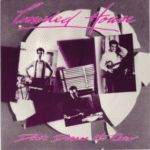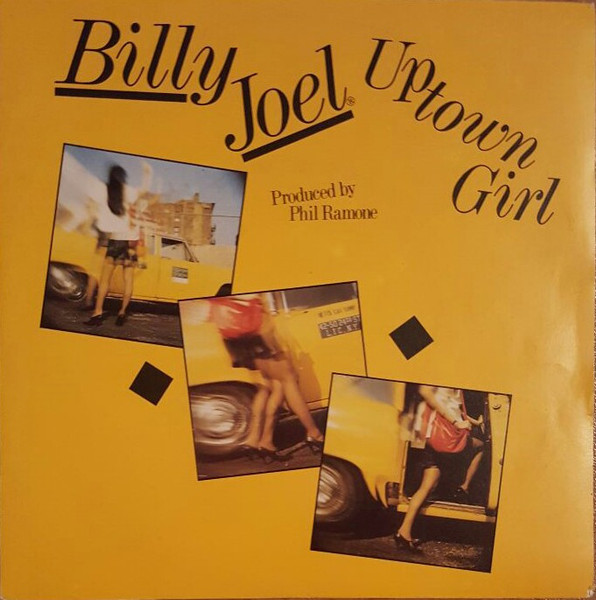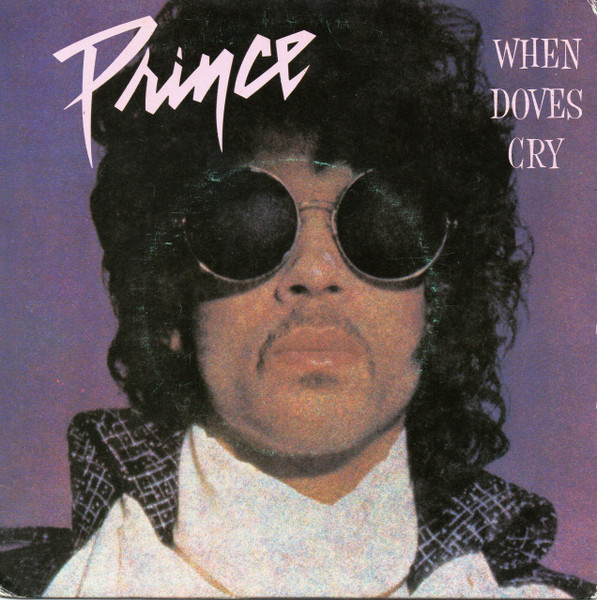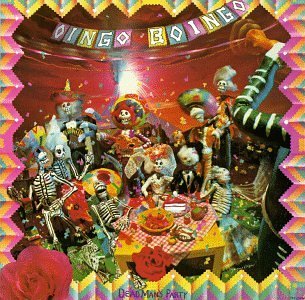 Crowded House’s Don’t Dream It’s Over is more than just a song—it is a cultural landmark of the 1980s, a track that captured the emotional complexity of its era while transcending the decade to remain timeless. Released in 1986 as the second single from their self-titled debut album, the song became an international sensation, climbing the charts in the United States, Australia, New Zealand, and several European countries. Its melodic grace, poignant lyrics, and intimate production solidified Crowded House’s reputation as masterful songwriters and established Neil Finn as one of the premier voices in contemporary rock. The song’s enduring legacy lies not only in its commercial success but in its ability to speak to universal themes of connection, perseverance, and emotional resilience.
Crowded House’s Don’t Dream It’s Over is more than just a song—it is a cultural landmark of the 1980s, a track that captured the emotional complexity of its era while transcending the decade to remain timeless. Released in 1986 as the second single from their self-titled debut album, the song became an international sensation, climbing the charts in the United States, Australia, New Zealand, and several European countries. Its melodic grace, poignant lyrics, and intimate production solidified Crowded House’s reputation as masterful songwriters and established Neil Finn as one of the premier voices in contemporary rock. The song’s enduring legacy lies not only in its commercial success but in its ability to speak to universal themes of connection, perseverance, and emotional resilience.
Origins and Songwriting Genius
Neil Finn, the principal songwriter of Crowded House, drew on his experiences growing up in New Zealand to craft Don’t Dream It’s Over. Finn’s lyrical approach has always emphasized evocative imagery, subtle emotional nuance, and introspective storytelling. This song exemplifies his knack for balancing vulnerability and accessibility, blending personal reflection with broader human themes.
The title itself, Don’t Dream It’s Over, encapsulates a sentiment of hope amid uncertainty. The lyrics suggest perseverance through challenges, whether in personal relationships, societal pressures, or internal struggles. Lines like “They come, they come / To build a wall between us” evoke both external and internal obstacles, while the chorus’s reassurance—“Hey now, hey now / Don’t dream it’s over”—offers a comforting, unifying message. Finn’s ability to convey complex emotions with melodic clarity is a central reason why the song resonated so profoundly with audiences.
Musically, the songwriting process combined traditional rock structures with more nuanced arrangements. The band experimented with layering guitars, keyboards, and subtle percussion to create a rich yet intimate sonic landscape. This attention to detail in composition and arrangement distinguishes Don’t Dream It’s Over from contemporaneous pop-rock tracks and contributes to its enduring appeal.
Melodic Structure and Harmonic Innovation
The song’s melody is deceptively simple, but its construction reflects sophisticated musical thinking. Finn uses a combination of diatonic and chromatic movement to create tension and resolution, drawing listeners into the song’s emotional narrative. The verses glide gently, almost conversationally, setting a reflective tone, while the chorus expands melodically, providing a sense of release and uplift.
The harmonies in the chorus further enhance its emotional resonance. Background vocals, layered with subtle precision, amplify the message of solidarity and hope. This harmonic depth contributes to the song’s memorability, making it immediately recognizable while allowing listeners to uncover new subtleties with repeated listening.
Crowded House’s instrumentation complements the melodic and harmonic design. Guitars, keyboards, and percussion are carefully balanced, never overpowering the vocals, and always serving the song’s emotional core. The understated arrangement creates a sense of intimacy, as if Neil Finn is speaking directly to the listener, drawing them into the narrative.
Lyrics and Thematic Resonance
Don’t Dream It’s Over operates on both literal and metaphorical levels. The lyrics describe obstacles and separations, which can be interpreted as external pressures—societal, relational, or cultural—or as internal struggles, such as doubt, fear, or emotional isolation. This duality allows the song to resonate across diverse audiences, each interpreting its meaning through their personal lens.
Lines such as “There’s a battle ahead / Many battles are lost / But you’ll find the courage you’ve got” underscore the song’s thematic focus on resilience. Unlike many anthems of the 1980s, which often emphasized celebration or rebellion, this song’s power derives from quiet encouragement. It reassures listeners that struggle is inevitable but not insurmountable, a message that feels timeless and universally applicable.
Neil Finn’s poetic style, balancing metaphor and clarity, ensures that the song remains emotionally accessible without being simplistic. This lyrical sophistication helped establish Crowded House as a band capable of producing pop music with intellectual depth—a rare combination that contributed to their critical acclaim.
Vocal Performance and Emotional Impact
Neil Finn’s vocal delivery is central to the song’s effectiveness. His voice conveys vulnerability, warmth, and sincerity, creating a profound sense of connection with the listener. The phrasing is intimate, almost conversational, yet rises to moments of emotional intensity in the chorus.
The production choices further amplify this impact. Reverb and subtle layering give the vocals a spacious quality, suggesting both distance and closeness simultaneously. This sonic technique mirrors the lyrical themes of connection and separation, reinforcing the emotional narrative on multiple levels. Finn’s ability to modulate tone and intensity throughout the track ensures that each lyric lands with clarity and impact.
Instrumentation and Production Techniques
Crowded House’s instrumental arrangement in Don’t Dream It’s Over blends pop sensibility with rock authenticity. The guitars provide both rhythmic and melodic support, alternating between clean arpeggiated lines and subtle chordal textures. Keyboards add harmonic richness, creating an ethereal atmosphere that complements the introspective lyrics.
The rhythm section, anchored by bassist Nick Seymour and drummer Paul Hester, maintains a steady, unintrusive pulse. Hester’s drumming is precise yet gentle, never overwhelming the song, and Seymour’s bass lines provide melodic counterpoints that enrich the harmonic structure. The overall effect is one of cohesion and subtlety, allowing the song to breathe and giving space for Finn’s vocals to dominate.
Producer Mitchell Froom played a crucial role in shaping the song’s sonic identity. His production choices emphasized clarity, warmth, and balance, ensuring that each instrument and vocal layer contributed to the song’s emotional impact. This careful attention to production helped Don’t Dream It’s Over stand out amidst the densely produced pop-rock tracks of the 1980s.
Cultural Reception and Chart Performance
Upon release, Don’t Dream It’s Over achieved immediate commercial success. It reached number two on the Billboard Hot 100 in the United States and topped the charts in Canada, while also achieving significant success in Australia and New Zealand. Its universal appeal lay in its blend of pop accessibility, emotional depth, and melodic sophistication.
Critics praised the song for its lyrical intelligence and musical craftsmanship. Unlike the bombastic rock anthems dominating radio at the time, Don’t Dream It’s Over offered introspection, subtlety, and emotional nuance. This distinction helped Crowded House carve out a unique space within the pop-rock landscape, earning them both commercial success and critical respect.
The song’s success also boosted the band’s international profile, introducing listeners around the world to Neil Finn’s songwriting prowess and Crowded House’s distinctive sound. It remains the band’s most enduring and recognizable hit, a testament to its lasting resonance.
Music Video and Visual Storytelling
The music video for Don’t Dream It’s Over complemented the song’s reflective tone. Featuring atmospheric visuals, intimate performances, and symbolic imagery, the video reinforced the themes of isolation, connection, and resilience. Its subtlety contrasted with the flashy, narrative-driven videos common in the 1980s, allowing the song’s emotional content to remain central.
The visual presentation also reinforced the song’s cultural identity. Crowded House appeared approachable and sincere, emphasizing musicianship and authenticity over spectacle. This approach resonated with audiences seeking emotional connection and helped solidify the song’s reputation as a thoughtful, introspective anthem.
Influence on Music and Legacy
Don’t Dream It’s Over has influenced countless artists across genres, from alternative rock to pop to singer-songwriter traditions. Its combination of lyrical sophistication, melodic accessibility, and understated production has inspired generations of songwriters to pursue emotional depth without sacrificing commercial appeal.
The song’s enduring legacy is also evident in its frequent inclusion in media, from film soundtracks to television shows, often used to evoke nostalgia, hope, or introspection. Cover versions by artists ranging from Paul Young to Sixpence None the Richer demonstrate its versatility and continuing relevance.
Moreover, Don’t Dream It’s Over helped shape the template for 1980s and early 1990s alternative pop-rock, emphasizing the value of intelligent songwriting, intimate vocal delivery, and careful production. It stands as a counterpoint to more bombastic trends of the era, demonstrating that quiet emotional resonance can achieve widespread appeal.
Live Performances and Audience Connection
Live renditions of Don’t Dream It’s Over highlight the song’s emotional power. Neil Finn’s nuanced vocal delivery, combined with the band’s precise instrumentation, creates a sense of intimacy even in large venues. The song’s structure—dynamic verses building to a soaring chorus—allows audiences to connect collectively, often singing along to the memorable melody.
These performances reinforce the song’s themes of connection and resilience. The shared experience of live music amplifies its emotional impact, ensuring that Don’t Dream It’s Over continues to resonate with listeners across generations.
Technical Analysis and Songwriting Craft
From a technical perspective, Don’t Dream It’s Over exemplifies masterful songwriting. The chord progression, melodic phrasing, and dynamic arrangement all contribute to its enduring appeal. Subtle modulations and harmonic shifts create emotional tension and release, while the rhythmic pacing ensures a sense of momentum without urgency.
The song’s instrumentation demonstrates restraint and sophistication. Each element—vocals, guitars, keyboards, bass, and drums—is carefully calibrated to serve the song’s emotional core. This meticulous approach reflects Neil Finn’s attention to detail and commitment to crafting songs that resonate both musically and emotionally.
Conclusion: Timelessness and Emotional Resonance
Don’t Dream It’s Over remains a defining anthem of the 1980s, an emotionally rich and musically sophisticated song that continues to captivate audiences. Its combination of lyrical insight, melodic beauty, and understated production ensures that it stands apart from the era’s more ephemeral pop hits.
The song’s lasting relevance lies in its universality. Themes of perseverance, hope, and human connection transcend time and place, allowing listeners to find personal meaning in its lyrics and melody. Neil Finn’s storytelling, Crowded House’s musicianship, and the song’s elegant production combine to create a work of art that is both emotionally resonant and culturally significant.
“Don’t Dream It’s Over” is not merely a song; it is a beacon of hope, a masterclass in songwriting, and an enduring testament to the power of music to inspire, console, and connect.”


